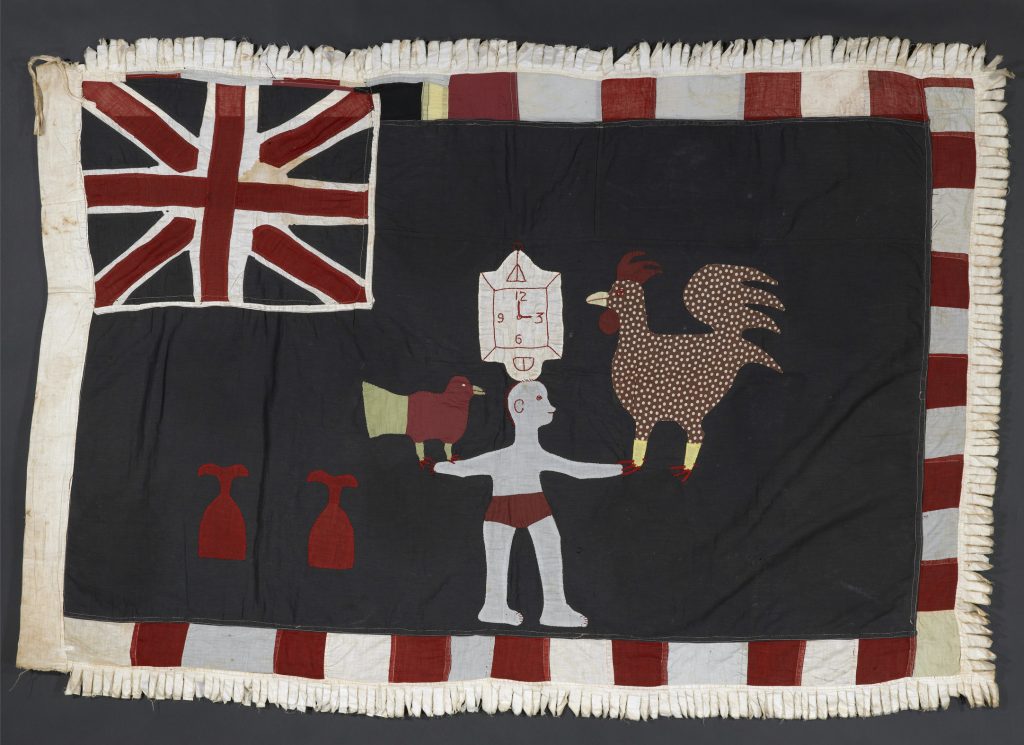Flag for Asafo Company No. 2 in Gomua Oguaa, Ghana (Frankaa) (work of art)
Artwork Info
Key Ideas
- This flag shows a male figure, painted white and red, on a navy background. He holds a rooster in one hand and a “clockbird” in the other, while balancing a clock on his head. The flag is bordered by strips of white cloth, and a depiction of the Union Jack (the national flag of the United Kingdom) is on the top-left corner.
- The rooster, the clockbird, and the clock are all things that define the beginning of the day, telling people when to start their daily activities. On the flag, these references connect timekeeping to authority.
- Asafo are traditional warrior groups in Akan culture. The word Asafo comes from sa, meaning war, and fo, meaning people.
- Asafo companies began as militia groups formed in imitation of European (mainly Dutch) military groups sailing along the coast. They have since evolved into community-based social groups with rules and a patrilineal or “father line” hierarchy. This means that each person’s family lineage is traced only through their father and their other male ancestors.
- Asafo flags can be symbols of a company’s values or depict a moment in the company’s history. The symbolism depicted on the flags may only be understood by the group that owns them.
Learn More
Originally, Asafo companies served as military organizations. Today they flourish as political, civic, social, and religious organizations whose members commission flags, or frankaa, upon initiation. Anyone whose father belonged to an Asafo company—virtually everyone—is entitled to join that group, including women. These flags evoke popular power, or the power of the people. Frankaa serve as crucial markers of group identity. Flags may be danced, paraded, draped, or otherwise displayed at special events. Through adaptation of European motifs and forms, such as the British flag, Asafo companies have appropriated colonial symbols of power and identity for local use.
The Union Jack on the upper left indicates that this flag was produced before 1957, when Ghana achieved independence as a nation from Great Britain. Flags often represent imagery, proverbs, or sayings that boast certain attributes. Here a man holds a rooster in one hand and a clockbird (known for calling out regularly at dawn and dusk) in the other, while balancing a clock on his head. The rooster and clockbird are symbols of authority and power, for they are the ones who decide when things are done. The alarm clock may represent an imported, mechanical version of the bird whose crowing sounds marks time.
tags: animals, community, family, identity, meaning, movement, pattern, power
Additional Resources
Resources for Teachers:
- Learn more about Asafo flags.
- Look at another Asafo flag from the Detroit Institute of the Arts.
Resources for Students:
- Read more about Ghana.
- Watch a video about an artisan flag maker.
- Watch a video of an Asafo company dance with a flag.

